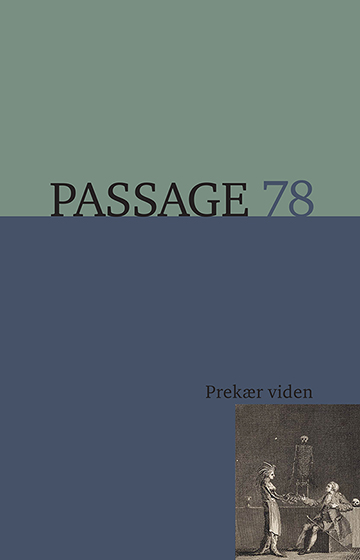Når en trekant ikke bare er en trekant. Matematik og litteratur i det lange 1800-tal
DOI:
https://doi.org/10.7146/pas.v32i78.102952Nøgleord:
Matematik, poesi, satire, Loves of the Triangles, litteratur- og matematikhistorieResumé
Henrik Kragh Sørensen: “When a Triangle is More than a Triangle. Mathema-tics and Literature in the Long 19th Century”
Mathematical concepts such as triangles are very precisely defined in their geometrical context. Yet, these concepts gain new life outside the strict mathematical use. And outside of mathematics, triangles can have all kinds of symbolic meanings. In this article, three dimensions of the reference to mathematics in literature are discussed as it was manifested during the long 19th century. Mathematics contributed content, image and form to literary culture, and in particular to poetry. Thus, the strange mathematical universe and its language could be exploited, for instance for satirical ends. The three dimensions are illustrated through analyses of two poems from 1790s, namely Thomas Campbell’s “Pons Asinorum” and the parody “Loves of the Triangles” ascribed to a Mr Higgins.
Downloads
Publiceret
Citation/Eksport
Nummer
Sektion
Licens
Forfattere, der publicerer deres værker via dette tidsskrift, accepterer følgende vilkår:
- Forfattere bevarer deres ophavsret og giver tidsskriftet ret til første publicering, samtidigt med at værket efter publiceringen er omfattet af en Creative Commons Attribution-licens, der giver andre ret til at dele værket med en anerkendelse af værkets forfatter og første publicering i nærværende tidsskrift.
- Forfattere kan indgå flere separate kontraktlige aftaler om ikke-eksklusiv distribution af tidsskriftets publicerede version af værket (f.eks. sende det til et institutionslager eller udgive det i en bog), med en anerkendelse af værkets første publicering i nærværende tidsskrift.
- Forfattere har ret til og opfordres til at publicere deres værker online (f.eks. i institutionslagre eller på deres websted) forud for og under manuskriptprocessen, da dette kan føre til produktive udvekslinger, samt tidligere og større citater fra publicerede værker (se The Effect of Open Access).





